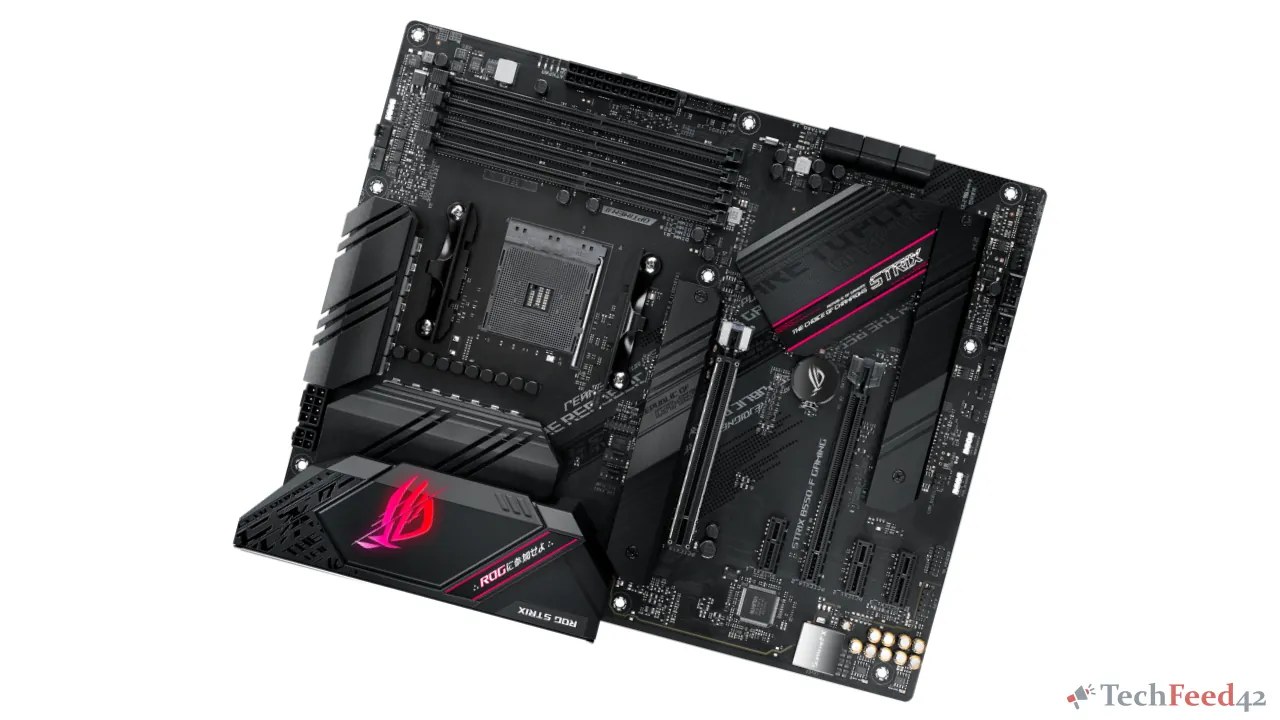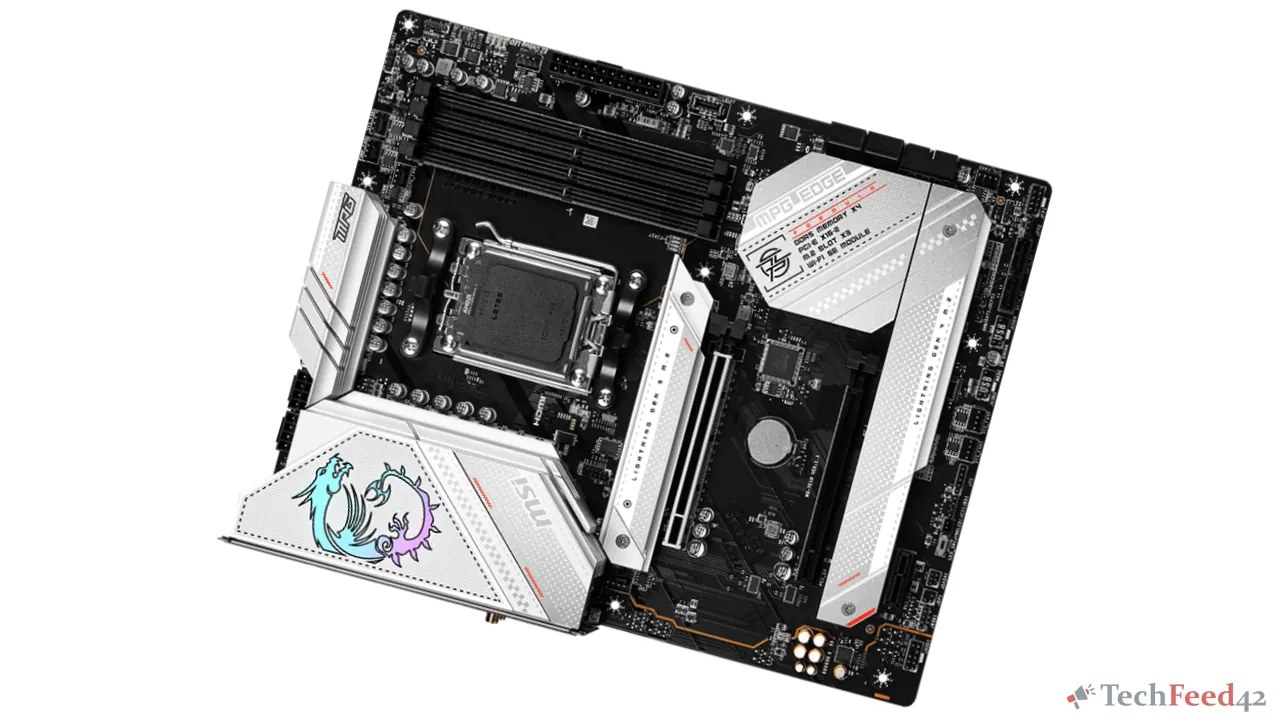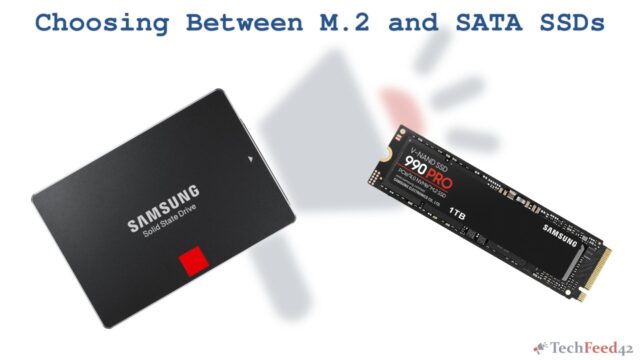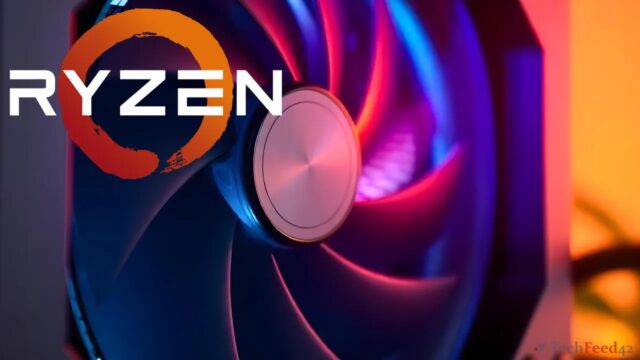When it comes to building or upgrading a PC in 2024, one of the most crucial decisions is selecting the right motherboard, especially if you’re using an AMD processor. With various options available for different CPU socket types, like AM4 and AM5, it’s important to understand the benefits of each and find a motherboard that matches your needs.
Understanding AMD Motherboards: AM4 vs. AM5
The first thing to consider when choosing a motherboard for your AMD CPU is the socket type. AMD currently offers two main types: AM4 and AM5. These sockets support different generations of processors, so understanding the differences between them is essential.

AM4 Motherboards
The AM4 socket has been around since 2016, and it’s compatible with a wide range of AMD processors, including Ryzen 1000, 2000, 3000, and 5000 series CPUs. If you already own an AM4 CPU or are looking to save money, AM4 motherboards remain a strong choice in 2024. They tend to be more affordable compared to the newer AM5 boards and still offer solid performance for most tasks, including gaming and content creation.
AM5 Motherboards
AM5 is AMD’s latest socket, introduced with the Ryzen 7000 series. This socket type is designed for future-proofing your PC, supporting PCIe 5.0, DDR5 memory, and offering better power delivery systems. If you plan to use a Ryzen 7000 series CPU or want to ensure your system is up-to-date for several years, investing in an AM5 motherboard might be the best option.
What to Look for in a Motherboard for AMD CPUs
Now that you understand the difference between AM4 and AM5, there are several other factors to consider when choosing the right motherboard for your AMD processor.
- CPU Compatibility
Make sure the motherboard you choose is compatible with your processor. AM4 motherboards, for example, support CPUs from the Ryzen 1000 to the Ryzen 5000 series, while AM5 boards are tailored for the latest Ryzen 7000 series. It’s important to check the motherboard’s CPU support list before purchasing. - RAM Support
RAM compatibility is another key factor. AM5 motherboards support DDR5 memory, which offers faster performance compared to DDR4. If you’re building a high-performance system, an AM5 board with DDR5 support is ideal. On the other hand, if you’re sticking with an AM4 board, DDR4 RAM will still deliver solid performance at a lower price point. - Expansion Slots and PCIe Support
The type of expansion slots and PCIe support can greatly influence your system’s performance. AM5 motherboards come with PCIe 5.0, which offers higher data transfer speeds for graphics cards, SSDs, and other peripherals. AM4 boards generally feature PCIe 4.0, which is still fast but may not offer the same future-proofing benefits as PCIe 5.0. - Connectivity and Ports
Consider the number and type of USB ports, Ethernet support, and Wi-Fi options available on the motherboard. AM5 motherboards typically come with more advanced connectivity options like Wi-Fi 6E and USB 4.0, while AM4 boards might offer fewer ports or older standards like USB 3.0. - Cooling and Power Delivery
A good motherboard should have robust cooling solutions and power delivery, especially if you plan to overclock your AMD CPU. AM5 motherboards generally have better VRMs (voltage regulator modules) to support the power demands of Ryzen 7000 series processors.
Top Motherboard Recommendations for AMD CPUs in 2024
Choosing the right AMD motherboard can feel overwhelming with so many options out there. To make your decision easier, we’ve selected two top-rated models – one for the AM4 socket and one for the newer AM5 platform – so you can find the perfect match for your next build.
Best AM4 Motherboard: ASUS ROG Strix B550-F Gaming (Wi-Fi 6)
The ASUS ROG Strix B550-F Gaming is an excellent choice if you’re building a system around an AM4 processor. This motherboard supports Ryzen 3000 and 5000 series CPUs, making it ideal for gamers and content creators who want solid performance at a reasonable price. It features PCIe 4.0, which offers good future-proofing, as well as Wi-Fi 6 support for fast wireless connectivity. The board also comes with a robust VRM design for stable power delivery during overclocking.
Key features:
- Supports Ryzen 3000 and 5000 series CPUs
- PCIe 4.0 and M.2 support for faster storage
- Wi-Fi 6 and USB 3.2 Gen 2
- Excellent VRM cooling for stable overclocking
If you’re looking for a reliable AM4 motherboard that won’t break the bank, the ASUS ROG Strix B550-F Gaming offers a good balance of performance, features, and price.

Best AM5 Motherboard: MSI MPG B650 EDGE Wi-Fi
For those who are upgrading to the latest Ryzen 7000, 8000 or 9000 series processor, the MSI MPG B650 EDGE Wi-Fi is a fantastic choice. As an AM5 motherboard, it supports DDR5 memory, PCIe 5.0, and advanced cooling solutions to handle the power demands of newer CPUs. The B650 chipset is more affordable than the higher-end X670 models, making this board a great option for gamers and enthusiasts who want to future-proof their system without overspending.
Key features:
- Supports Ryzen 7000, 8000 and 9000 series CPUs
- DDR5 memory and PCIe 5.0 support
- Advanced cooling and robust VRM for overclocking
- Wi-Fi 6E and USB 4.0 for cutting-edge connectivity
The MSI MPG B650 EDGE Wi-Fi is perfect for anyone looking to build a next-gen system around the AM5 platform while keeping costs manageable.

Conclusion
In 2024, choosing the right motherboard for your AMD processor largely depends on your needs and budget. AM4 motherboards, like the ASUS ROG Strix B550-F Gaming, are still excellent options for users on a budget or those upgrading older systems. However, if you’re looking for the latest technology and plan to use a Ryzen 7000 or 8000 series CPU, investing in an AM5 motherboard like the MSI MPG B650 EDGE Wi-Fi ensures you’re ready for the future with support for PCIe 5.0 and DDR5 memory.
By considering factors like CPU compatibility, RAM support, expansion slots, and connectivity options, you can confidently choose the best motherboard for your AMD build in 2024.


